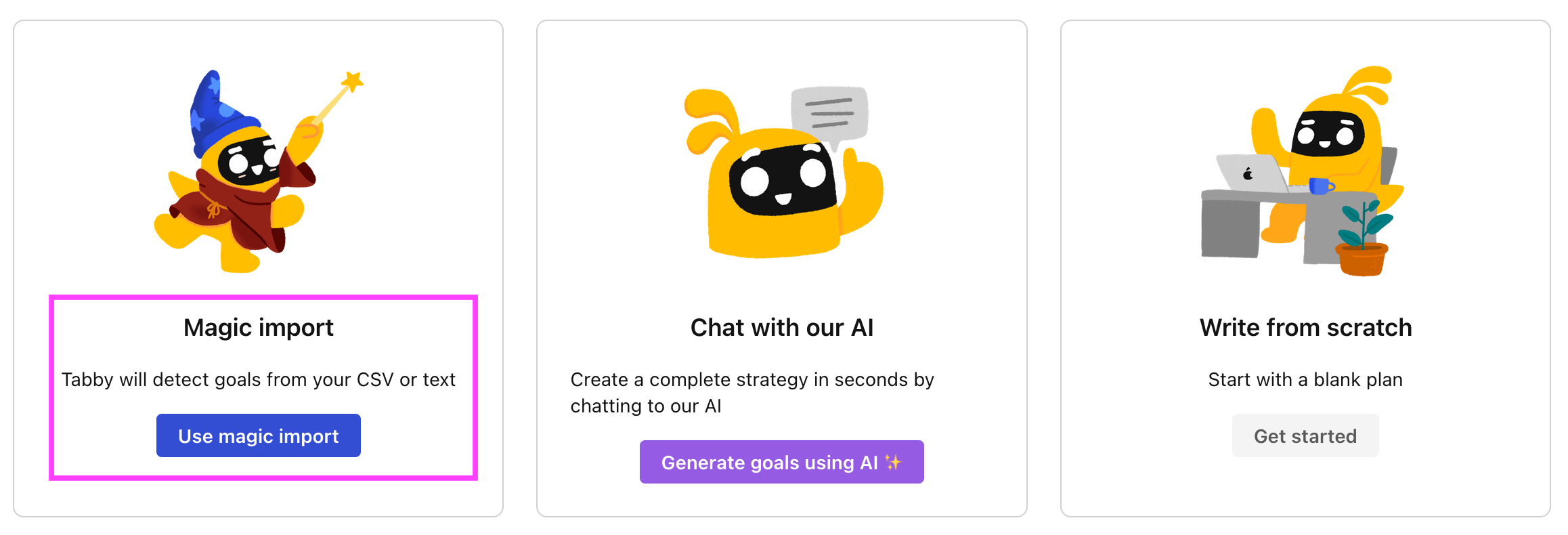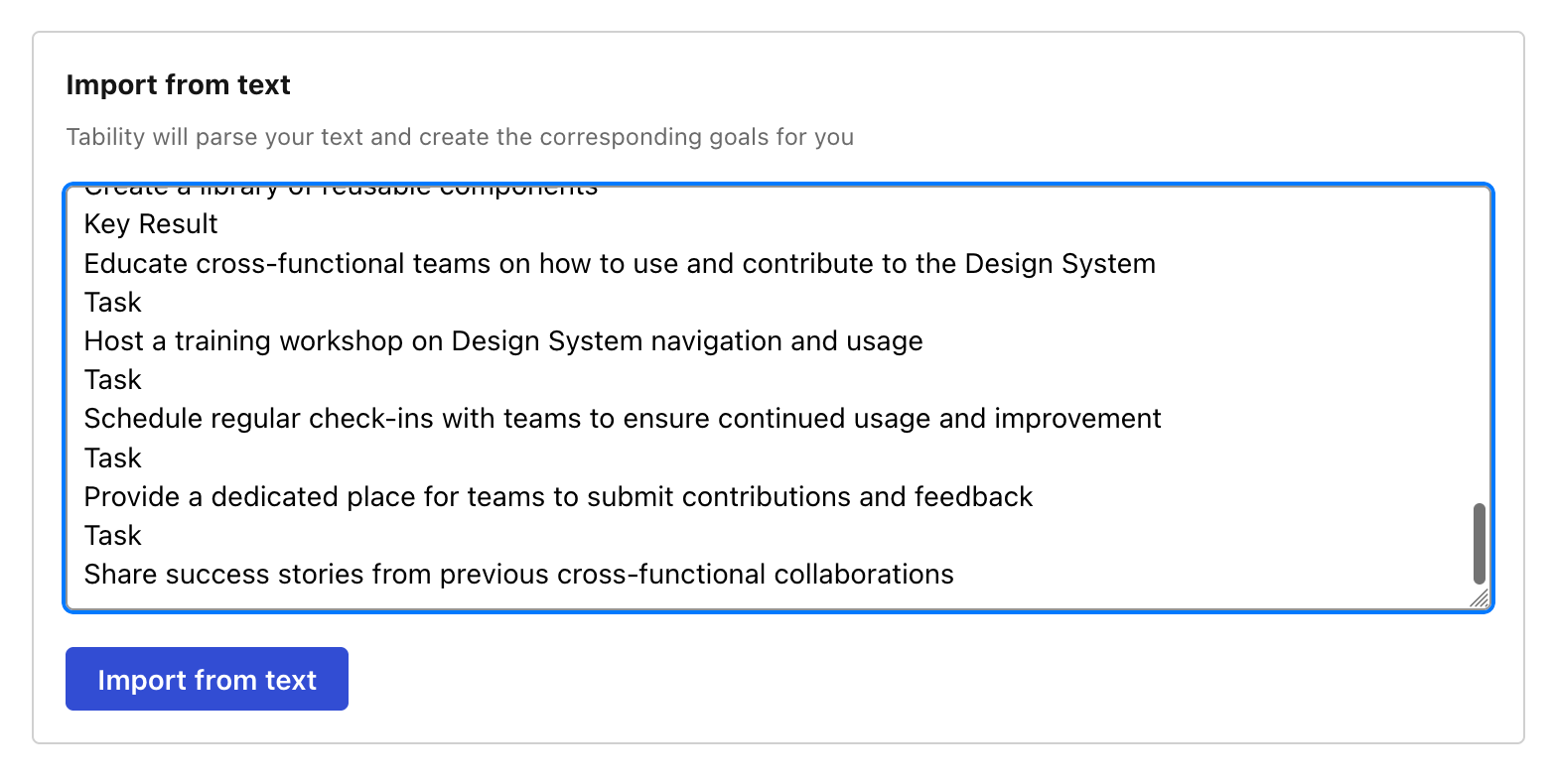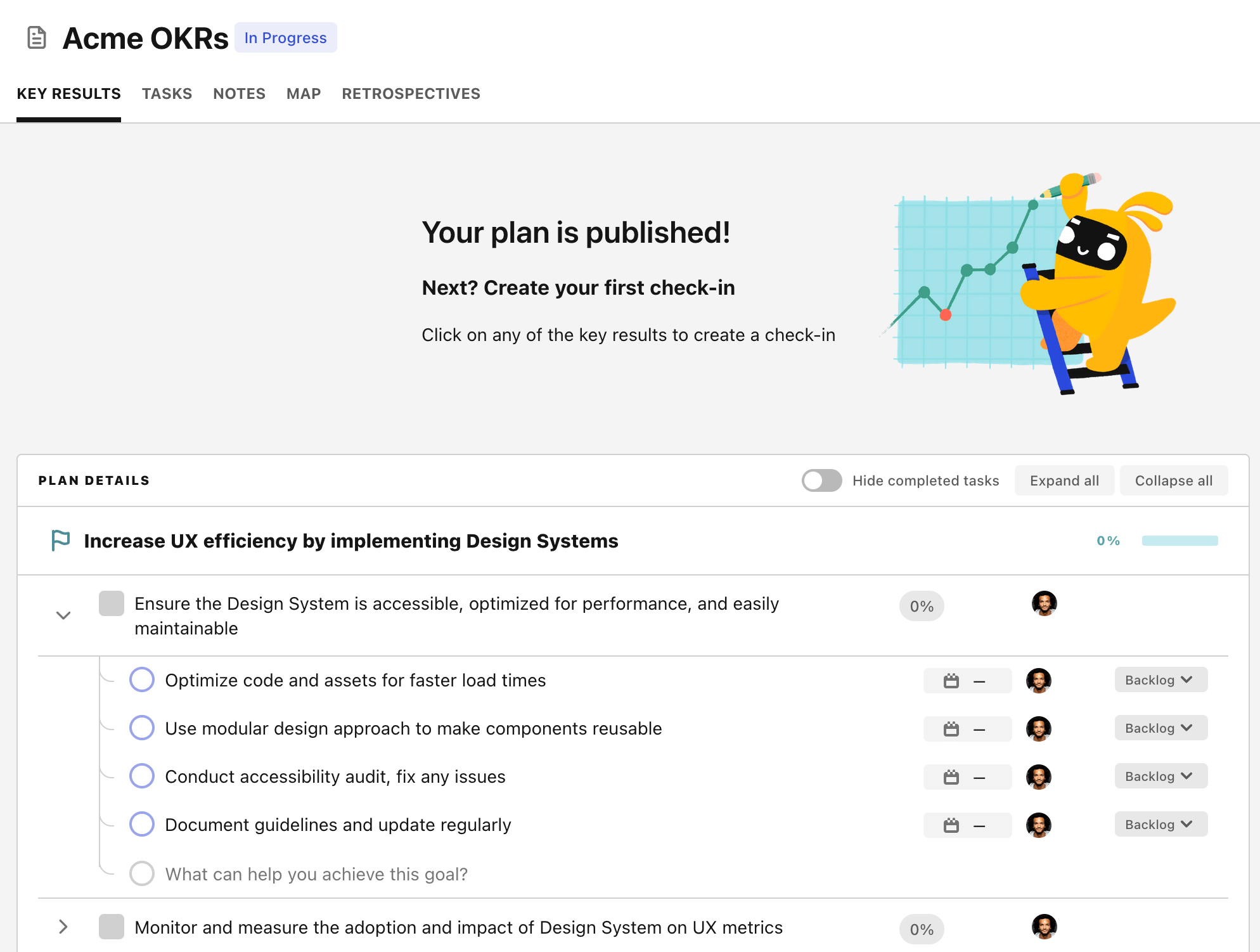OKR template to enhance the quality of our asset portfolio
Your OKR template
There is an emphasis on reducing non-performing assets by 20%. This includes restructuring existing non-performing assets and implementing strict credit risk assessment protocols. The OKR also favors improving debt recovery strategies to reduce non-performing assets.
Another focus of the OKR is the diversification of the portfolio across new sectors. The objective here is to achieve diversification across three new sectors which involves evenly distributing funds and seeking investment opportunities within unfamiliar sectors.
Lastly, potential risks against rewards from each new sector are to be analyzed for diversification purposes. This means that an understanding of risk versus reward is vital so a balance can be reached in the diversification process and quality yield can be achieved.
ObjectiveEnhance the quality of our asset portfolio
KRIncrease asset portfolio value by 10%
Invest in high-yield assets to boost portfolio performance
Consistently monitor market trends to guide investment decisions
Identify underperforming assets for potential sale
KRReduce non-performing assets by 20%
Restructure existing non-performing assets
Implement strict credit risk assessment procedures
Improve debt recovery strategies
KRImprove asset diversification across 3 new sectors
Allocate funds evenly across chosen sectors
Research investment opportunities in unfamiliar sectors
Analyze risk versus reward for each new sector
How to edit and track OKRs with Tability
You'll probably want to edit the examples in this post, and Tability is the perfect tool for it.
Tability is an AI-powered platform that helps teams set better goals, monitor execution, and get help to achieve their objectives faster.
With Tability you can:
- Use AI to draft a complete set of OKRs in seconds
- Connect your OKRs and team goals to your project
- Automate reporting with integrations and built-in dashboard
Instead of having to copy the content of the OKR examples in a doc or spreadsheet, you can use Tability’s magic importer to start using any of the examples in this page.
The import process can be done in seconds, allowing you to edit OKRs directly in a platform that knows how to manage and track goals.
Step 1. Sign up for a free Tability account
Go tohttps://tability.app/signup and create your account (it's free!)
Step 2. Create a plan
Follow the steps after your onboarding to create your first plan, you should get to a page that looks like the picture below.

Step 3. Use the magic importer
Click on Use magic import to open up the Magic Import modal.
Now, go back to the OKR examples, and click on Copy on the example that you’d like to use.

Paste the content in the text import section. Don’t worry about the formatting, Tability’s AI will be able to parse it!

Now, just click on Import from text and let the magic happen.

Once your example is in the plan editor, you will be able to:
- Edit the objectives, key results, and tasks
- Click on the target 0 → 100% to set better target
- Use the tips and the AI to refine your goals
Step 4. Publish your plan
Once you’re done editing, you can publish your plan to switch to the goal-tracking mode.

From there you will have access to all the features that will help you and your team save hours with OKR reporting.
- 10+ built-in dashboards to visualise progress on your goals
- Weekly reminders, data connectors, and smart notifications
- 9 views to map OKRs to strategic projects
- Strategy map to align teams at scale